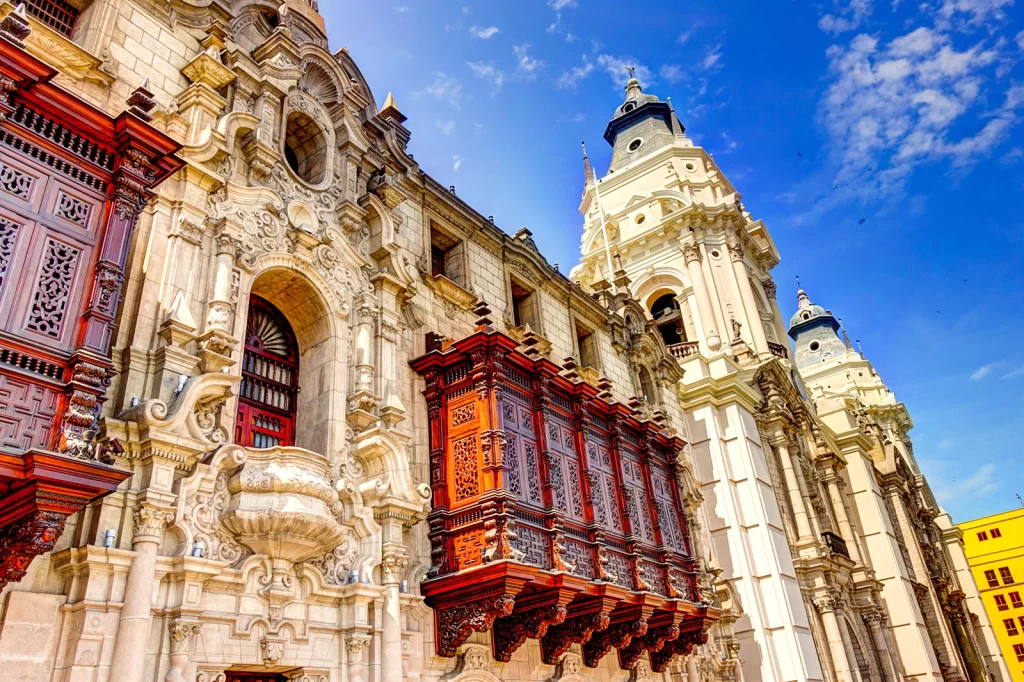Lima, Peru’s capital, is a city rich in history and delectable cuisine. On the country’s stunning Pacific coast, Lima is an eclectic mix of colonial architecture, ancient ruins, and modern neighborhoods. Visitors from all over the world flock to the city to indulge in the city’s mouthwatering cuisine and fascinating array of cultural activities. This lively Latin American metropolis extends a warm welcome to visitors thanks to its one-of-a-kind combination of traditional practices and contemporary conveniences.
Lima’s Historic District & Larco Museum
To begin, visit Lima’s historic district to see what it’s all about. Surrounded by impressive buildings such as the Government Palace, the Cathedral of Lima, and the Archbishop’s Palace, the Plaza de Armas is an excellent starting point.
The famous Larco Museum is a must-see for art and history enthusiasts alike. Explore the museum’s extensive pre-Columbian art collection, which includes ceramics, gold and silver artifacts, textiles, and more. Learn more about Peru’s fascinating ancient cultures and the art they produced.
Miraflores and Barranco
Miraflores and Barranco are two of Lima’s most exciting neighborhoods, and no visit would be complete unless you visited both. The famous Parque del Amor (Love Park) in Miraflores provides expansive views of the Pacific Ocean. Enjoy the chic boutiques and tasty cuisine of the Larcomar shopping center while taking in the energetic vibe of the district.
Barranco, on the other hand, is known for its bohemian vibe, which attracts visitors with its colorful streets lined with art galleries, charming houses, and active nightlife. Cross the Bridge of Sighs (Puente de los Suspiros) and take in the artistic and lively atmosphere of the neighborhood.
Peruvian Cuisine
You can’t visit Lima without sampling some of the local cuisine. Lima is the gastronomic capital of South America, with some of the most taste-worthy cuisines in the world. Try some ceviche, causa limeña, and anticuchos, which are all delicious and refreshing. Peru’s culinary heritage can be experienced by sampling traditional dishes at local restaurants and food markets. For a one-of-a-kind meal, try some of the inventive dishes served at Michelin three-star restaurants such as Central, Maido, and Astrid y Gastón.
History & Culture
To learn more about Peruvian culture and history, visit the Museo de la Nación. This museum offers a fascinating journey through time, with exhibits on the Inca, Moche, and Chavn cultures, among others. Explore artifacts, learn about their significance, and gain a better understanding of Peruvian culture.
Pachacamac is an absolute must-see for anyone interested in Lima’s pre-Columbian history. This dig, located on the outskirts of the city, reveals the remains of an ancient ceremonial complex. Explore the ruins of this holy site to learn about the ancient Peruvians’ rituals and beliefs.
Before departing, stop by the Parque de la Reserva and experience the magic of the Magic Water Circuit. As dusk falls, the park’s 13 ornamental fountains transform into a kaleidoscope of water, light, and color. Enjoy the spectacular performances and make some unforgettable memories while there.
Afro-Peruvian Experience
The Afro-Peruvian Museum in Lima’s El Carmen neighborhood celebrates Afro-Peruvian history and culture. It showcases the influence of Afro-Peruvians in music, dance, art, and literature through exhibits of artifacts and videos.
El Carmen itself is a vibrant community with African influences evident in local customs. Visitors can explore the area, enjoy the pulsating beats of Afro-Peruvian music, and admire colorful murals and street art. The Afro-Peruvian Cultural Center, located nearby, hosts events and performances highlighting Afro-Peruvian music and dance. It’s a lively and enriching cultural experience in the heart of Lima.
Source: Yahoo News

